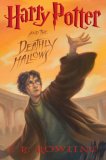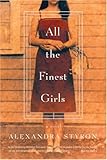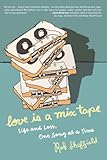Last week, I wrote about my frustration with the book The Goddesses of Kitchen Avenue, by Barbara Samuel. I’m please to report that we’ve worked out our issues, and I’m in a place of enjoyment with the book.
Any frustration I had is partly my own fault. The cover art features a cafe table with a lovely blue tablecloth, and a bunch of coffee mugs and glasses, a couple of desserts, and many women gathered around, sharing the food. We don’t see their faces, but we can see that they are friends.
I bought the book in flagrant defiance of the “Don’t Judge a Book by Its Cover” rule, because I liked the picture, and then, I became frustrated when it wasn’t a happy cozy cafe book, but a deep look at fractured relationships. Just because I’m writing a happy cozy cafe book, I expect everything to be like that.
Anyway, I’ve set it aside while I finish a Trek novel for review later this weekend, and will review it formally sometime next week.








